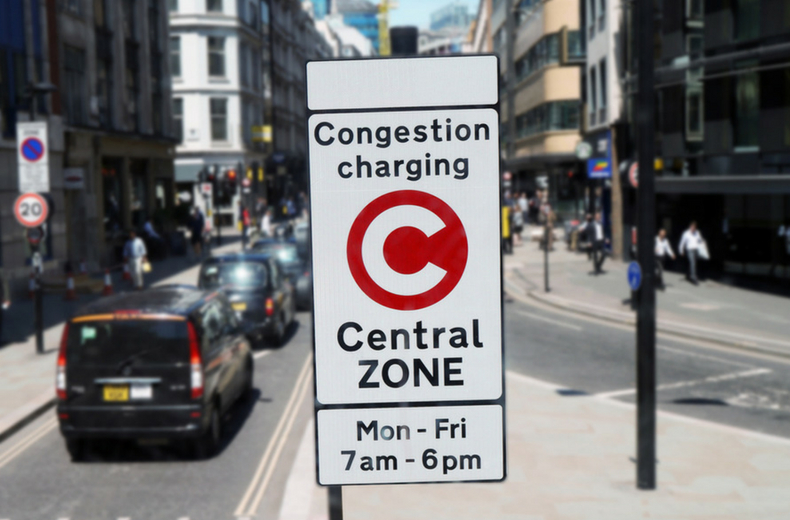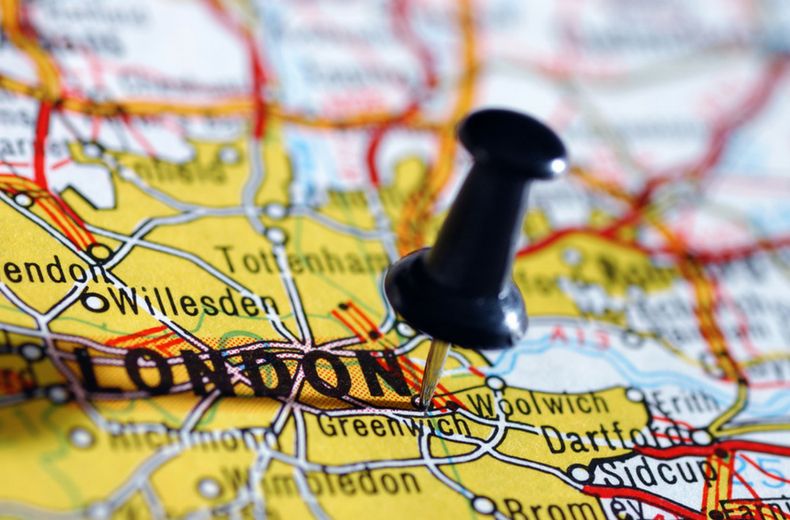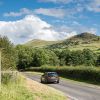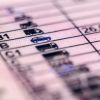There are increased charges and emissions legislation to be aware of and even some different driving laws that can land the unaware with a fine, so it's worth getting to grips with these differences long before you set off on your trip.
We’ve put together a comprehensive ‘driving in the UK’ guide to answer all your questions, offer expert tips and instil confidence before you start driving in London.
Charges and low emissions zones

The first thing you’ll need to do is make sure you’ve paid any necessary charges to avoid getting a fine. Certain charges and tolls apply throughout the capital and on routes into the city.
Congestion charge
Many road users will have to pay the congestion charge fee before heading into the Central London zone.
This covers areas from Marylebone across to Shoreditch and down to Elephant and Castle and Victoria.
The Congestion Charge is a £15 daily charge if you drive within the Congestion Charge zone between 7:00-18:00 on Monday-Friday and 12:00-18:00 on Saturday-Sunday and bank holidays.
Most vehicles will have to pay this - including electric vehicles - unless they have an exemption to the charge, such as two-wheeled motorbikes, registered vehicles driven by disabled motorists and private hire vehicles. Drive an electric vehicle? See our top rated electric vehicle breakdown cover policy.
London Ultra Low Emission Zone (ULEZ)
Drivers will also need to be aware of London’s ULEZ.
London's Ultra Low Emission Zone is an area within the city where vehicles that do not meet specific emissions standards are required to pay a daily charge to enter.
The goal of the ULEZ is to improve air quality and reduce harmful pollutants, such as nitrogen dioxide (NO2) and particulate matter (PM).
Petrol vehicles must meet Euro 4 emission standards, and diesel vehicles must adhere to Euro 6 standards.
Vehicles that do not meet these standards are subject to a daily charge to drive within the ULEZ area. The charge is £12.50 per day for cars, motorcycles, and vans.
ULEZ covers all of Greater London, and there are many signs signifying when drivers are entering the zone.
The ULEZ charge is enforced using cameras that automatically read number plates, ensuring that non-compliant vehicles are fined.
Dartford Crossing
Remember, you’ll also have to pay on your way into London if you decide to use the Dartford Crossing on the M25 or the M6 toll road.
Each year, 180,000 cars use this section of the M25 orbital motorway, with many drivers required to pay the Dart Charge toll to use the crossing. The cost for cars is £2.50.
You must pay the Dart Charge by midnight the day after you use the Dartford Crossing or you will be liable for a Penalty Charge Notice (PCN). Refer to the Transport for London site for updates.
Things to look out for when driving in London
London is home to some of the UK’s busiest routes and junctions. Make sure you’re prepared to tackle potentially stressful situations by brushing up on the rules around on-street parking, road marking meanings, and bus lanes.
Yellow box junctions
It may be frustrating sitting at a junction and getting nowhere, but don’t be tempted to pull out unless you can see your exit is clear.
Drivers can be issued Penalty Charge Notices (PCN) for finding themselves in the yellow hatched box at junctions. If you end up blocking the path of another vehicle you could also pose a danger to yourself, other motorists and other road users.
Only move forwards when the path ahead of you is clear and it is safe to do so.
Don’t let other drivers pressure you into driving into the yellow hatched area before you are ready. Tackling the capital’s busy junctions can be nerve-racking so take your time.
Read more: Box junctions – all you need to know
Bus Lanes
Unsurprisingly. there are a lot of bus lanes running throughout the city centre and surrounding areas. Make sure you’re aware of their operational hours – these are indicated before and along the route by a blue sign. Operational hours are not the same across London and different bus lane operation times vary.
If you’re caught driving in a bus lane while it’s in operation you could receive a PCN.
Don’t be fooled by other vehicles using the lanes. Motorcyclists, London taxis and mopeds are also permitted to use certain lanes during operational hours.
Read more: Bus lanes – who can use them?
Red routes
You must not stop on designated red routes.
These are marked by either double red lines or by a blue circular sign with a red cross running through it.
Double red lines are in operation 24 hours a day, 365 days a year.
You’ll also see some roads with single red lines. You may be allowed to stop on these at certain times of day for a certain amount of time.
On all these routes, any stopping places will be clearly indicated.
If you’re caught breaking the rules you’re likely to receive a PCN.
Read more: London parking guide
Parking
Finding a parking space in London is likely to be a bit of a challenge, especially if you’re new to the area.
As detailed above – there are certain markings along the roads which signal that parking is either permitted or prohibited.
In addition to red routes, you can’t park on double yellow lines at any time.
Single yellow lines signal vehicles can park there at certain times and on certain days.
The hours of control are displayed on large signs as you enter each controlled parking zone (CPZ). There will be additional signage if any areas vary from the CPZ.
Remember, you can park within certain areas designated by dashed white lines as long as you abide by any corresponding ‘Pay and Display’ signs. You may not park here, however if these bays are for resident permit holders.
Similar dashed red line bays also appear along red routes and can be used at certain times of day such as early in the morning and late at night. Always check the signs around the bays as these times can vary significantly across the capital.
Never park on zig-zag lines in any circumstances – this is an offence and you may face a fine.
Do not assume you can park for free if there are no lines at all. Always check lamp posts and signs in the area to make sure you’ve paid if necessary, or to ensure you don’t overstay the time limit.
Some London boroughs, such as Westminster and Islington, have introduced parking surcharges for owners of diesel vehicles. Always check when you park to see if this is the case.
Also in London, it is illegal to park on the pavement.
Read more: Can you park on double yellows? Complete parking guide
Rules of the road in London
London councils also have powers to enforce other types of offences with cameras, such as ‘No left/right/u-turns’.
No access or no entry signs may also have cameras patrolling the entrance area.
Tips for first-time London drivers
Driving in the capital for the first time doesn’t need to be scary. All you need to do is take the time to prepare beforehand and follow these tips.
Plan your route
Navigating London’s roads for the first time can be intimidating enough without the added worry of not knowing where you’re going.
Always do your homework before setting off and plan the best route possible.
Remember, in a busy city the most direct route may not always be the quickest. Avoid busy junctions at peak times or you could be delayed for a considerable amount of time.
If you have a Sat Nav – use it safely. Most models will let you know in advance if there are major delays on your route and will offer an alternative. Don’t be tempted to over-rely on your Sat-Nav as routes may change without your sat-nav updating quickly enough - Always obey road signs.
Stay calm
Knowing exactly where you are going will also help you to stay calm. Try to relax and have confidence in your ability to navigate congested roads – even if it’s your first time driving through the capital.
Be Aware
Driving in busy cities can present hazards you may not be used to – such as commuting cyclists, busy bus lanes and taxis pulling in and out of lanes to pick up passengers.
Avoid rush hour if possible
It may seem obvious but avoiding driving during peak periods will help make tackling London’s roads for the first time a little less nerve-racking.
Are you experiencing a car fault, warning, or mechanical problem on your road trip? Find a local mechanic with the RAC.

RAC sale – up to 33% off*
• Roadside cover from £5.29 a month†
• We get to most breakdowns in 60 mins or less
• Our patrols fix 4/5 breakdowns on the spot











